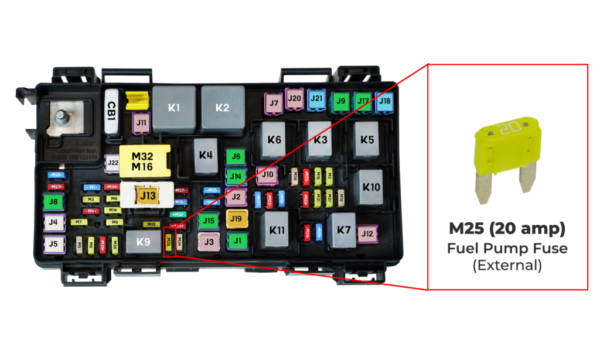Imagine you’re cruising down the highway, enjoying the drive, when suddenly your car starts to sputter. That sinking feeling hits you — could it be the fuel pump?
If you’ve ever found yourself in this situation, you’re not alone. Many drivers face this issue, and the solution might be simpler than you think. Did you know that a tiny fuse could be the key to resolving your fuel pump woes?
Understanding whether your car’s fuel pump has a fuse and knowing its location can save you time and money. This knowledge empowers you to tackle minor issues before they escalate, potentially avoiding costly repairs. Stick around as we delve into the world of fuel pump fuses, unraveling the mystery of their existence and pinpointing their location. Your car knowledge toolkit is about to get a valuable upgrade!

Credit: tipmrebuilders.com
Where Is The Fuel Pump Fuse
The fuel pump fuse is usually in the fuse box under the hood or dashboard. It protects the fuel pump from electrical problems. Check your car’s manual for exact location details.
Is there a problem with your car’s fuel pump? Identifying the fuel pump fuse is a good starting point. The fuse is crucial for the pump’s operation, preventing electrical overloads. Let’s explore where to find this essential component in your vehicle.
Location in the Fuse Box The fuel pump fuse is usually located in the fuse box. This box is often found in the engine compartment. Some vehicles have it under the dashboard. – Engine compartment: This is the common location for the fuse box.
– Under dashboard: Some models place the fuse box here for accessibility. – Owner’s manual: Always consult this for exact locations. Identifying the Fuse Finding the fuel pump fuse involves recognizing specific markings. Manufacturers use labels to identify fuses. – Fuse diagram: This helps locate the fuel pump fuse.
– Labeling: Manufacturers use symbols or numbers. – Fuse size: The fuel pump fuse is standard-sized. Checking the Fuse It’s crucial to check if the fuse is intact. A blown fuse disrupts the fuel pump’s function. – Visual inspection: Look for breaks in the fuse wire.
– Multimeter test: Use this tool for accurate readings. – Replacement: Fit a new fuse if the old one is faulty. Vehicle-Specific Variations Different vehicles might have variations in fuse location. Knowing your car’s specifics aids in finding the fuse.
– Model differences: Each car model has unique designs. – Fuse box layout: This varies between different manufacturers. – Online forums: These can provide model-specific advice.

Credit: www.youtube.com
Conclusion
Knowing about the fuel pump fuse is essential. It protects the pump from electrical issues. Finding it is usually simple. Check the fuse box, often near the dashboard or engine. The fuse diagram helps locate it quickly. Regular checks can prevent unexpected problems.
Replace a blown fuse promptly. This ensures your vehicle runs smoothly. Ignoring it may lead to engine troubles. Keep your vehicle in top shape. Remember, a small fuse plays a big role. Stay aware and maintain your car’s health. Keep driving stress-free and safe.
